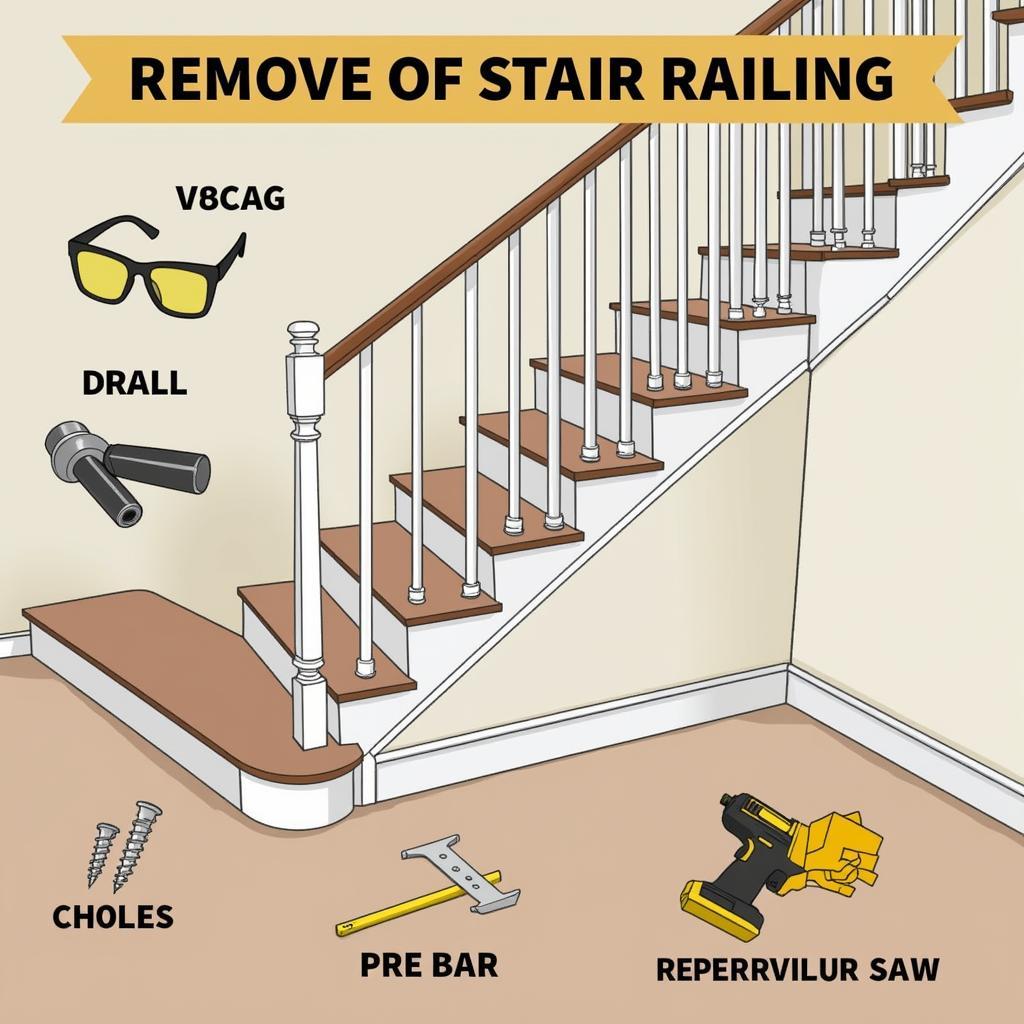How to Remove Stair Railing
December 30, 2024Removing a stair railing can seem daunting, but with the right tools and approach, it can be a manageable DIY project. Whether you’re updating your home’s aesthetic, improving accessibility, or simply replacing a damaged railing, this guide will walk you through the process safely and efficiently. We’ll cover everything from gathering the necessary tools to dealing with tricky situations like angled railings and intricate designs.
Planning Your Railing Removal
Before diving into the removal process, careful planning is essential. First, assess the type of railing you have. Is it wood, metal, or a combination? This will determine the tools you need. Next, identify how the railing is attached. Common methods include screws, bolts, and welds. Knowing this will help you prepare for the disassembly. Finally, consider the structural integrity of your staircase. Removing a railing can sometimes weaken the stairs, especially in older homes. If you have any doubts, consult a structural engineer before proceeding.  Preparing to Remove a Stair Railing
Preparing to Remove a Stair Railing
Gathering the Necessary Tools
Having the right tools will make the removal process smoother and safer. Typically, you’ll need safety glasses, gloves, a drill, screwdrivers (both Phillips and flathead), a pry bar, and possibly a reciprocating saw for cutting through tough materials. For metal railings, you might also need a grinder or metal cutting blades.
Step-by-Step Railing Removal Guide
Removing the Handrail
Start by removing the handrail. This is usually attached to the newel posts and balusters with screws or bolts. Carefully locate and remove these fasteners. A pry bar can be helpful for gently separating the handrail from the other components.
Detaching the Balusters
Once the handrail is removed, move on to the balusters. Again, identify how they are attached to the handrail and the base. They might be screwed in, nailed, or wedged. Use the appropriate tools to detach each baluster. Sometimes, a little bit of persuasion with a pry bar is necessary.
Removing the Newel Posts
The newel posts are typically the most securely attached parts of the railing. They often extend into the floor and are bolted or screwed down. Locate these fasteners and remove them. You might need to use a reciprocating saw to cut through any stubborn connections.
Dealing with Angled Railings
Angled railings can present a slightly more complex challenge. The angles require more precise measurements and cuts. When removing angled railings, take your time and double-check your measurements to avoid damaging the surrounding structure.
Repairing the Staircase After Railing Removal
After removing the railing, you’ll likely need to repair the areas where it was attached. This might involve filling screw holes, patching up any damage, and repainting or refinishing the staircase. outdoor apartment stairs
Safety Precautions
Throughout the entire process, prioritize safety. Wear your safety glasses and gloves at all times. Be mindful of sharp edges and falling debris. If you’re working at heights, use appropriate fall protection. If you’re unsure about any step, consult a professional.
Conclusion
Removing a stair railing can be a satisfying DIY project when approached with careful planning and execution. Remember to assess the railing type, gather the right tools, and prioritize safety throughout the process. By following these steps, you can successfully remove your stair railing and update your staircase. outdoor rail lighting
FAQ
- What is the most common way to attach a stair railing?
Screws and bolts are the most common methods. - Do I need to hire a professional to remove my stair railing?
While it’s a DIY-able project, complex railings might require professional help. - What should I do if my staircase feels unstable after removing the railing?
Consult a structural engineer immediately. - What type of saw is best for cutting metal railings?
A reciprocating saw with metal cutting blades is recommended. - How can I repair the holes left after removing the railing?
Wood filler and patching compound can be used to repair holes.
Common Scenarios
- Scenario 1: Difficulty removing rusted bolts. Solution: Use penetrating oil and a wrench.
- Scenario 2: Balusters are stuck. Solution: Carefully use a pry bar to loosen them.
Further Assistance
For more information about related topics, check out our articles on outdoor apartment stairs and outdoor rail lighting.
Contact Us
Need help with your project? Contact us 24/7:
Phone: 0915117113
Email: [email protected]
Address: Hamlet 3, Binh An Quarter, Phu Thuong Ward, Viet Nam, Binh Phuoc 830000, Vietnam.